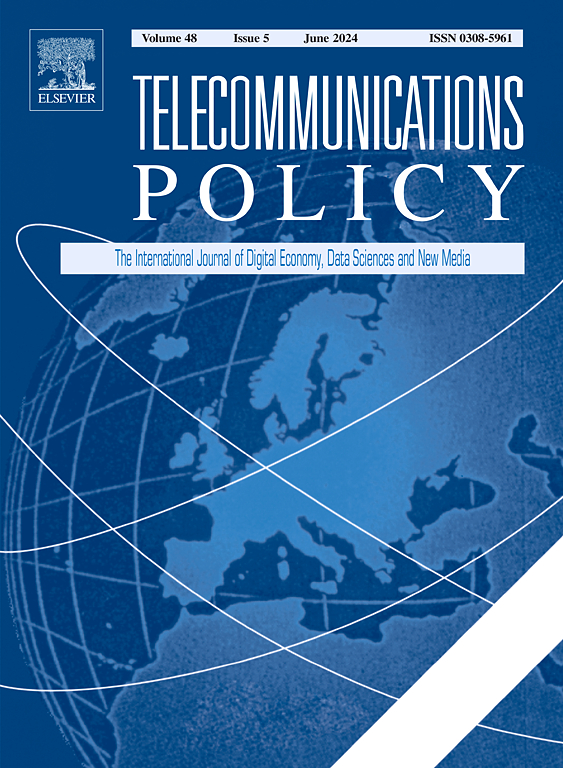不同影响下的数字歧视:法律和经济分析
IF 6.4
2区 管理学
Q1 COMMUNICATION
引用次数: 0
摘要
美国许多农村和部落社区缺乏宽带是公认的事实,但也有人声称主要是少数民族和城市社区缺乏宽带可用性,有时被称为 "数字红线 "或 "数字歧视"。在这些诉求的推动下,两党共同制定的《2021 年基础设施投资与就业法案》中包含了一项解决数字歧视问题的条款,并指示联邦通信委员会制定实施该法律条款的规则。该委员会的规则采用了两个法律歧视标准,包括故意歧视(差别待遇)和差别影响(差别效果)。利用该委员会新的宽带结构数据,我们检验了以少数群体为主的社区和以多数群体为主的社区(以人口普查街区组为衡量标准)之间宽带可用性的差异,结果发现没有证据表明存在针对少数群体的数字歧视。本文章由计算机程序翻译,如有差异,请以英文原文为准。
Digital discrimination under disparate impact: A legal and economic analysis
The lack of broadband in many rural and Tribal communities in the U.S. is widely recognized, but there are also claims of a lack of broadband availability in predominantly Minority and urban communities, sometimes labeled digital redlining or digital discrimination. Motivated by such claims, the bi-partisan Infrastructure Investment and Jobs Act of 2021 includes a provision addressing digital discrimination and directing the Federal Communications Commission to write rules implementing the statutory provision. The Commission's rules adopt two legal discrimination standards including intentional discrimination (differential treatment) and disparate impact (differential effect). Using data from the Commission's new broadband fabric data, we test for differences in broadband availability between predominantly minority and majority neighborhoods (measured as census block groups) and find no evidence of digital discrimination against minorities.
求助全文
通过发布文献求助,成功后即可免费获取论文全文。
去求助
来源期刊

Telecommunications Policy
工程技术-电信学
CiteScore
10.80
自引率
12.50%
发文量
122
审稿时长
38 days
期刊介绍:
Telecommunications Policy is concerned with the impact of digitalization in the economy and society. The journal is multidisciplinary, encompassing conceptual, theoretical and empirical studies, quantitative as well as qualitative. The scope includes policy, regulation, and governance; big data, artificial intelligence and data science; new and traditional sectors encompassing new media and the platform economy; management, entrepreneurship, innovation and use. Contributions may explore these topics at national, regional and international levels, including issues confronting both developed and developing countries. The papers accepted by the journal meet high standards of analytical rigor and policy relevance.
 求助内容:
求助内容: 应助结果提醒方式:
应助结果提醒方式:


